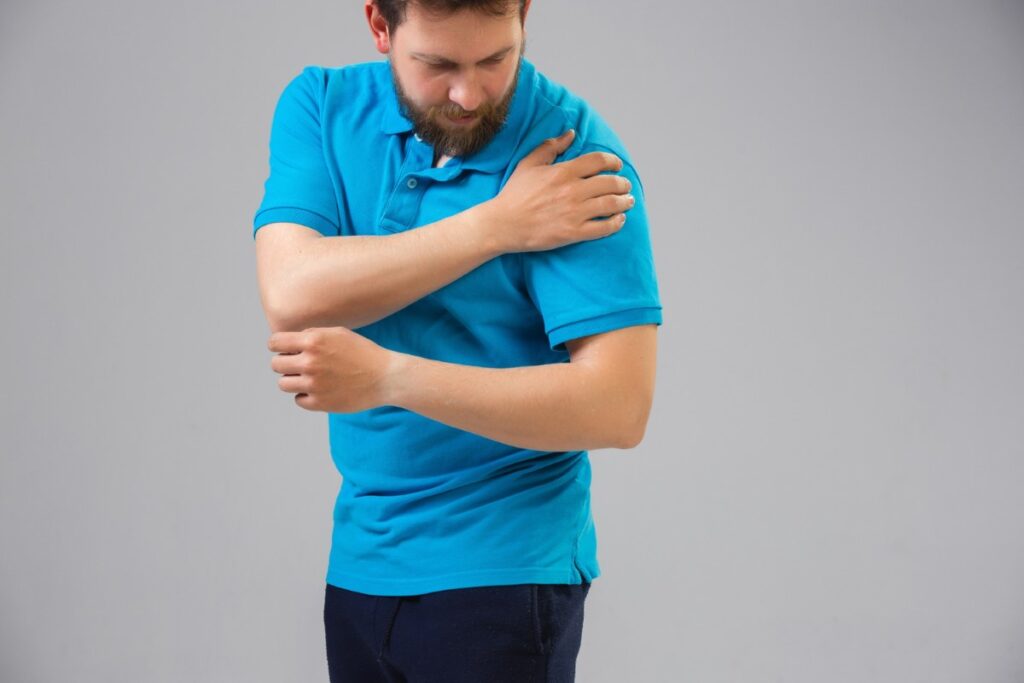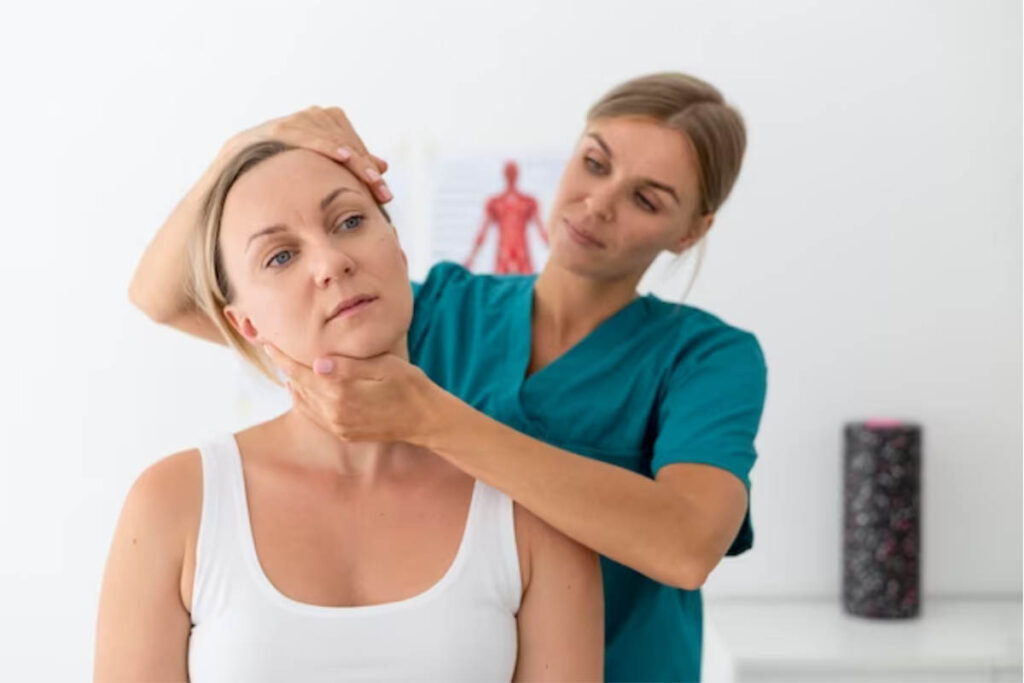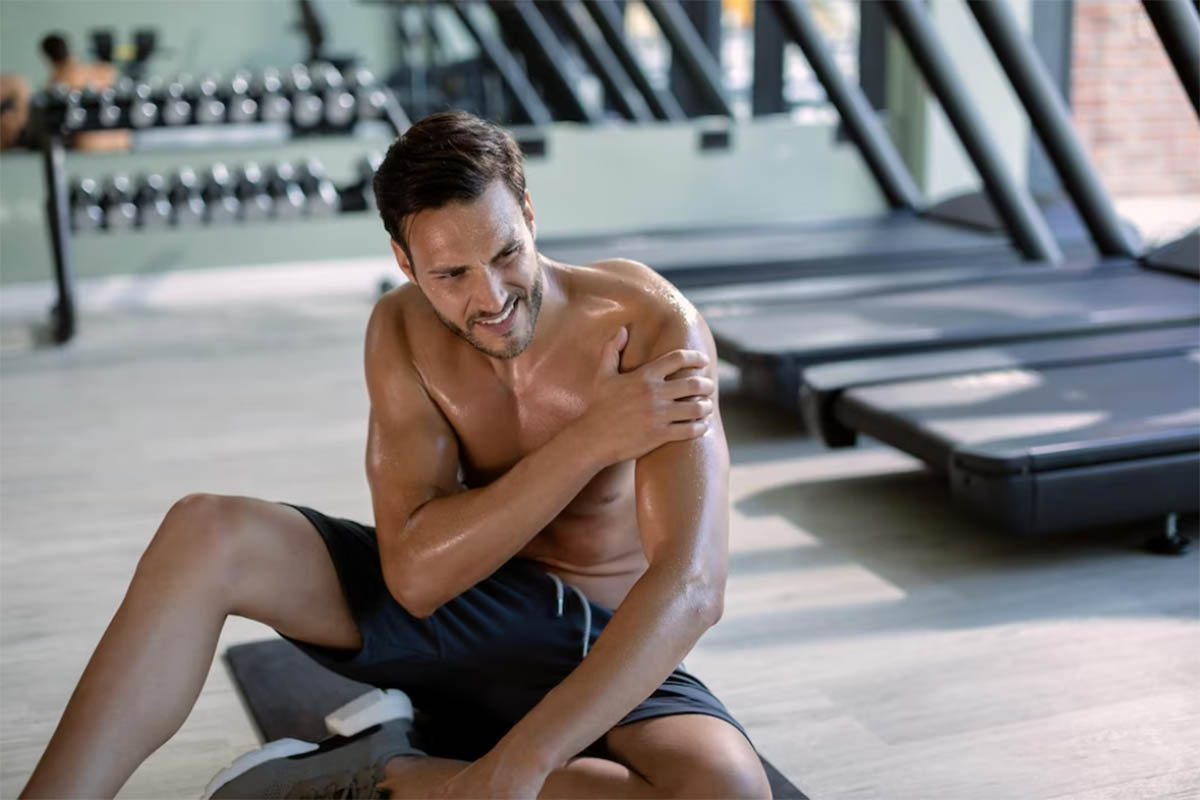Shoulder injuries, particularly torn ligaments, can be painful and debilitating. Whether you’re an athlete, someone recovering from a traumatic accident, or simply dealing with the wear and tear of daily life, understanding torn ligaments in the shoulder and the role of strength training in rehabilitation is crucial for a successful recovery. In this comprehensive article, we will explore the anatomy of the shoulder, the causes and types of torn ligaments, the symptoms, diagnosis, and most importantly, how strength training can play a pivotal role in the rehabilitation process. Whether you’re a healthcare professional, a patient, or someone seeking information, this article aims to provide valuable insights.
Table of Contents
- Introduction
- Anatomy of the Shoulder
- Torn Ligaments in the Shoulder
- a. Causes and Types
- b. Symptoms
- c. Diagnosis
- The Role of Strength Training in Rehabilitation
- a. Benefits of Strength Training
- b. Rehabilitation Exercises
- c. Guidelines for Safe Strength Training
- Recovery and Beyond
- Preventing Shoulder Injuries
- Conclusion
1. Introduction
The shoulder is one of the most mobile and complex joints in the human body. This remarkable range of motion allows us to perform a wide array of activities, from reaching for an object on a high shelf to throwing a ball. However, this flexibility also makes the shoulder prone to injuries, particularly torn ligaments.
A torn ligament in the shoulder can result from various causes, including sports injuries, falls, or gradual wear and tear. These injuries can significantly impact your daily life, limit your range of motion, and cause persistent pain. Fortunately, rehabilitation, especially strength training, plays a crucial role in helping individuals regain shoulder function and return to their regular activities.
In this article, we will explore the anatomy of the shoulder, delve into the causes and types of torn ligaments, discuss the symptoms and diagnosis, and most importantly, examine how strength training can be a game-changer in the rehabilitation process.
2. Anatomy of the Shoulder

Understanding the anatomy of the shoulder is fundamental to comprehending the complexity of shoulder injuries and their rehabilitation. The shoulder is a ball-and-socket joint composed of several key components:
- Humerus: The upper arm bone, which forms the ball of the ball-and-socket joint.
- Scapula: The shoulder blade, which provides a stable base for the shoulder joint.
- Clavicle: The collarbone, which connects the scapula to the sternum (breastbone).
- Glenoid: The shallow socket in the scapula where the head of the humerus articulates.
- Ligaments: Strong fibrous tissues that connect bones and provide stability to the joint.
- Muscles and Tendons: A complex network of muscles and tendons that facilitate shoulder movement and provide strength.
3. Torn Ligaments in the Shoulder
a. Causes and Types
Torn ligaments in the shoulder can occur due to various factors, including:
- Trauma: A direct blow to the shoulder or a fall can result in ligament tears.
- Repetitive Stress: Overuse or repetitive stress on the shoulder joint, common in sports like baseball and swimming, can lead to ligament damage over time.
- Age-Related Wear and Tear: As we age, the shoulder ligaments may become more susceptible to degeneration and tears.
There are several types of shoulder ligament injuries, including:
- Rotator Cuff Tears: These involve the group of tendons and muscles that stabilize the shoulder joint. Rotator cuff tears can be partial or complete.
- Labral Tears: The labrum is a ring of cartilage that surrounds the glenoid socket. Tears in the labrum are often associated with instability in the shoulder joint.
- Ligament Sprains: These occur when ligaments are stretched or torn, often due to trauma or overuse.
b. Symptoms
The symptoms of a torn ligament in the shoulder can vary depending on the type and severity of the injury. Common symptoms include:
- Pain: Persistent and often severe pain in the shoulder, particularly with movement.
- Weakness: A noticeable loss of strength in the affected shoulder.
- Instability: A feeling that the shoulder is loose or may pop out of place.
- Limited Range of Motion: Difficulty moving the shoulder through its full range of motion.
- Clicking or Popping: Audible or palpable sensations of clicking or popping in the shoulder joint.
c. Diagnosis
Diagnosing a torn ligament in the shoulder typically involves a combination of:
- Physical Examination: The healthcare provider will assess your shoulder’s range of motion, stability, and strength and may perform specific tests to evaluate ligament integrity.
- Imaging Studies: X-rays, MRI scans, or ultrasound may be ordered to visualize the extent of the ligament injury and rule out other structural issues.
- Medical History: Discussing the onset of symptoms, any traumatic events, and your medical history helps in making an accurate diagnosis.
4. The Role of Strength Training in Rehabilitation

a. Benefits of Strength Training
Strength training, also known as resistance training, is a fundamental component of shoulder rehabilitation. It offers several benefits for individuals recovering from torn ligaments in the shoulder:
- Improved Muscle Function: Strength training targets the muscles around the shoulder joint, helping to restore and enhance muscle function.
- Enhanced Joint Stability: Strong muscles provide better support to the shoulder joint, reducing the risk of further injuries and instability.
- Pain Management: Strong muscles can alleviate stress on the ligaments and reduce pain during movement.
- Increased Range of Motion: Controlled strength training exercises can gradually improve shoulder flexibility and range of motion.
- Functional Improvement: Strength training exercises are designed to mimic everyday movements, promoting functional recovery.
b. Rehabilitation Exercises
Rehabilitation programs for torn ligaments in the shoulder typically include a range of strength training exercises. Some commonly prescribed exercises include:
- Isometric Exercises: These involve contracting the shoulder muscles without actually moving the joint. Examples include isometric shoulder abduction and adduction.
- Eccentric Exercises: These focus on lengthening the muscle while it’s contracting. Eccentric exercises can help with muscle control and stability.
- Resistance Band Exercises: These use elastic bands to provide resistance, helping strengthen the muscles surrounding the shoulder joint. Examples include band pulls and external rotations.
- Free Weight Exercises: These exercises use dumbbells or other free weights to challenge the shoulder muscles. Examples include dumbbell presses and lateral raises.
- Functional Movements: Exercises that mimic real-life movements, such as lifting, reaching, and throwing, are essential for restoring functional strength.
c. Guidelines for Safe Strength Training
While strength training is beneficial for shoulder rehabilitation, it’s crucial to follow safety guidelines to avoid further injury. Some key considerations include:
- Professional Guidance: Work with a physical therapist or trained healthcare provider to create a tailored strength training program that meets your specific needs and stage of recovery.
- Start Slowly: Begin with low-resistance exercises and gradually increase intensity as your shoulder strength improves.
- Proper Form: Focus on proper technique and form to prevent strain or injury.
- Listen to Your Body: Pay attention to any pain or discomfort during exercises and modify or stop as needed.
- Rest and Recovery: Adequate rest and recovery time between sessions are crucial for muscle healing and growth.
- Consistency: Stick to your rehabilitation plan and perform your prescribed exercises regularly for the best results.
5. Recovery and Beyond
Recovery from a torn ligament in the shoulder can be a gradual process, and the timeline can vary depending on the severity of the injury and individual factors. Strength training plays a central role in the rehabilitation process and is often combined with other treatments such as physical therapy, pain management, and lifestyle modifications.
As you progress through your rehabilitation program, you’ll likely experience improvements in strength, range of motion, and overall shoulder function. It’s essential to work closely with your healthcare provider or physical therapist to ensure that your rehabilitation plan is tailored to your specific needs and goals.
Beyond recovery, continuing with a regular strength training routine can help maintain shoulder health and reduce the risk of future injuries. Strong shoulder muscles provide better joint stability and support, making everyday activities easier and more enjoyable.
6. Preventing Shoulder Injuries
While rehabilitation is crucial for recovering from torn ligaments in the shoulder, it’s equally important to take steps to prevent these injuries from occurring in the first place. Here are some preventive measures:
- Proper Warm-Up: Always warm up before engaging in strenuous activities or sports to prepare your muscles and joints.
- Technique and Form: If you’re involved in sports or activities that involve repetitive shoulder movements, ensure you’re using proper technique and form to reduce the risk of overuse injuries.
- Cross-Training: Incorporate a variety of activities and exercises into your fitness routine to prevent overuse injuries.
- Rest and Recovery: Allow your body sufficient time to rest and recover between workouts or activities, especially if you’re experiencing any signs of fatigue or pain.
- Regular Check-ups: If you have a history of shoulder injuries or ongoing shoulder issues, consider regular check-ups with a healthcare provider or physical therapist to monitor your shoulder health.
7. Conclusion
Torn ligaments in the shoulder can be physically and emotionally challenging, but with the right rehabilitation, including strength training, individuals can experience significant improvements in shoulder function and quality of life. If you suspect a shoulder injury or are already on the road to recovery, working closely with healthcare professionals, following a tailored rehabilitation plan, and prioritizing shoulder health through strength training can make a substantial difference in your overall well-being. Remember, prevention is key, so take steps to protect your shoulders from injury and enjoy a life of pain-free movement and activity.


